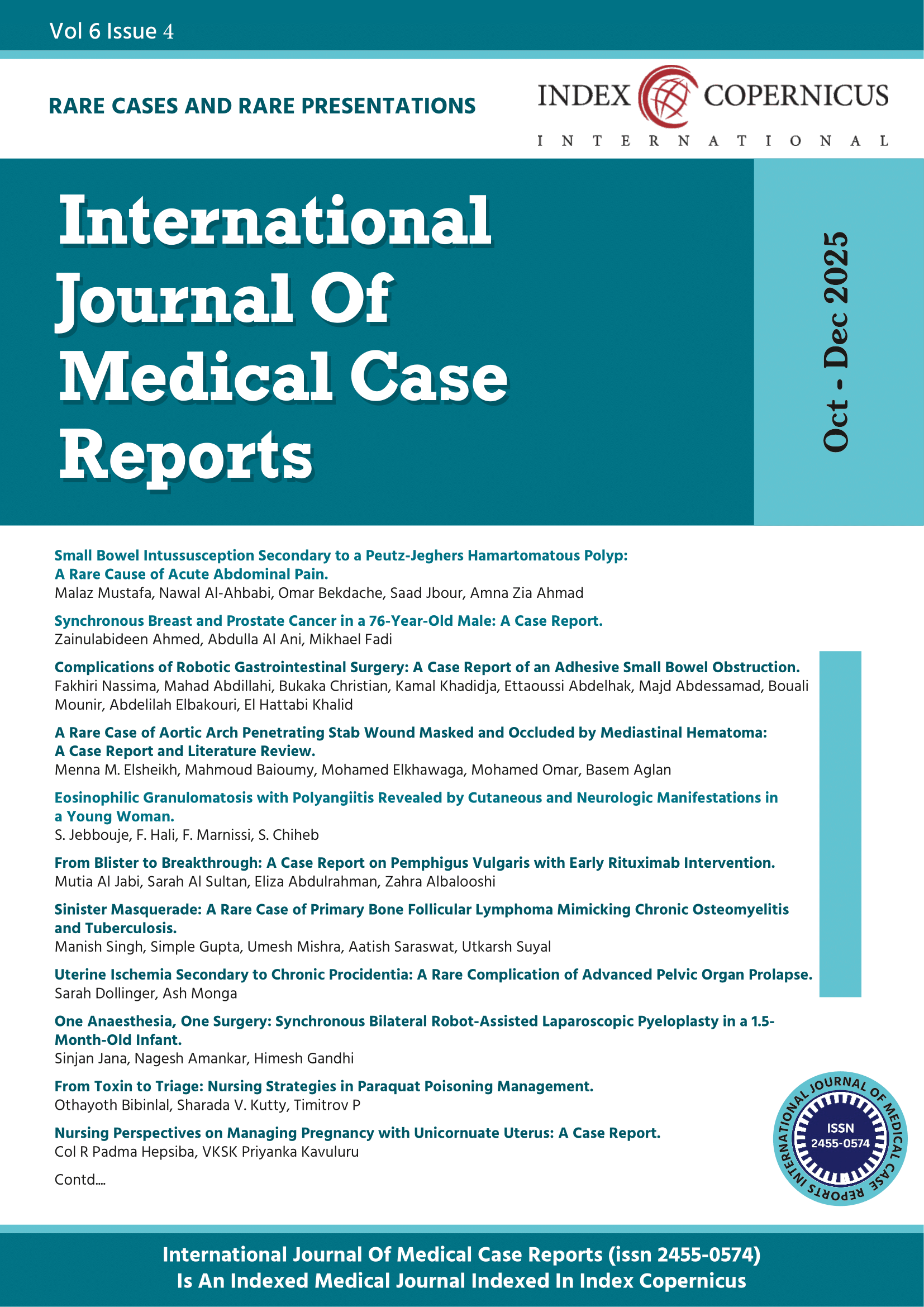From Toxin to Triage: Nursing Strategies in Paraquat Poisoning Management.
Main Article Content
Abstract
Background:
Paraquat (N,N′-dimethyl-4,4′-bipyridinium dichloride) is a widely used herbicide that is associated with high fatality rates following ingestion. Despite global bans, paraquat remains available in India which is an important factor contributing to intentional and accidental poisonings. Its toxicity results in severe multiorgan dysfunction, particularly pulmonary fibrosis, renal failure, and hepatic injury, with no specific antidote available. Supportive care and evidence-based nursing interventions are therefore central to improving outcomes.
Case Report:
We report the case of a 19-year-old male who presented to the medical intensive care unit following intentional ingestion of approximately 100 mL of a 24% paraquat solution. The patient developed systemic manifestations including vomiting, respiratory distress, acute kidney injury, hepatic dysfunction and leukocytosis. He required non-invasive ventilation, haemodialysis, and multimodal pharmacotherapy, including N-acetylcysteine, corticosteroids, antioxidants, antibiotics and hepatoprotective agents. Laboratory investigations showed derangements in renal and liver function, elevated bilirubin, and leukocytosis, with gradual biochemical improvement after supportive therapy. Nursing care emphasized airway and oxygenation monitoring, fluid balance, neurological status, infection prevention, and psychological support. Despite aggressive supportive measures, the prognosis in paraquat poisoning remains guarded, underscoring the importance of early recognition, comprehensive medical management, and structured nursing protocols.
Conclusion:
This case highlights the lethal nature of paraquat poisoning and the absence of a curative antidote. Multidisciplinary collaboration, vigilant nursing interventions, and early supportive care are pivotal in mitigating morbidity and mortality. Nursing strategies that combine physiological monitoring with psychosocial support play a crucial role in patient recovery.
